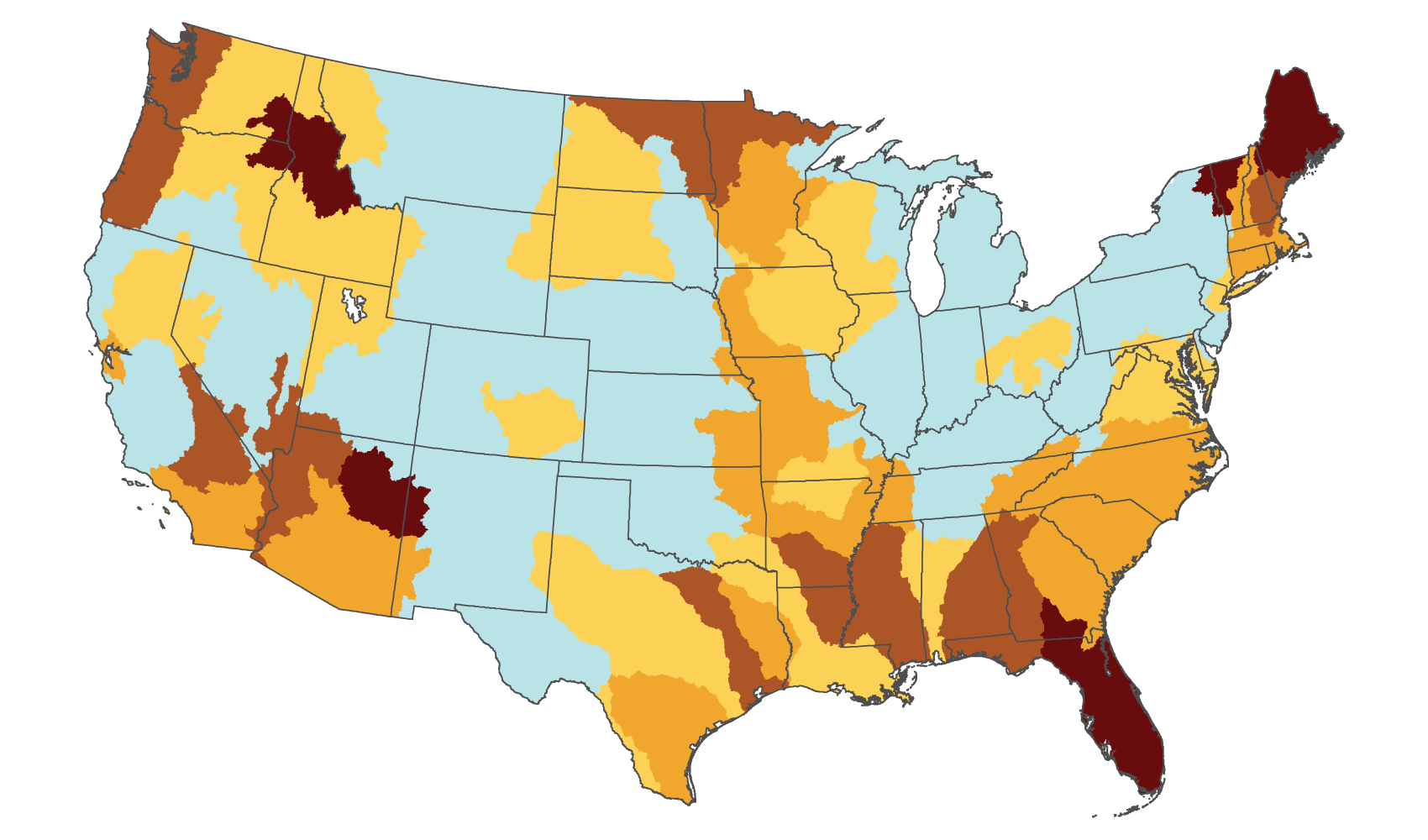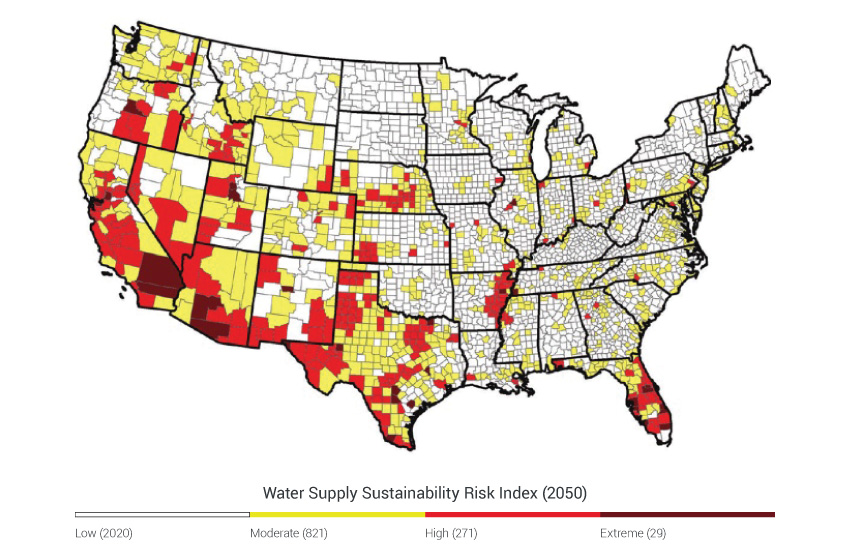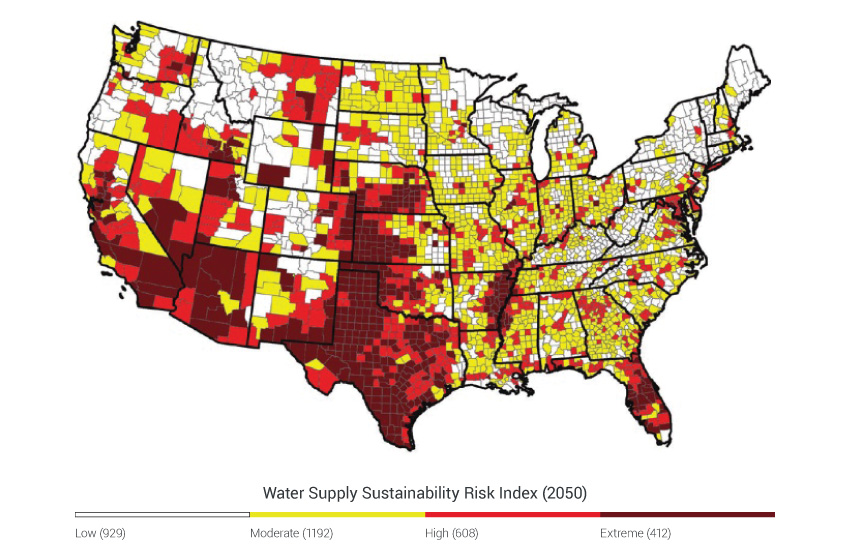Introduction
Water quality and water supply reliability are jeopardized by climate change in a variety of ways that affect ecosystems and livelihoods.
Surface and groundwater supplies in some regions are already stressed by increasing demand as well as declining runoff and groundwater recharge. In some regions, particularly the southern U.S. and the Caribbean and Pacific islands, climate change is increasing the likelihood of water shortages and competition for water. Water quality is diminishing in many areas, particularly due to increasing sediment and contaminant concentrations after heavy downpours.





















